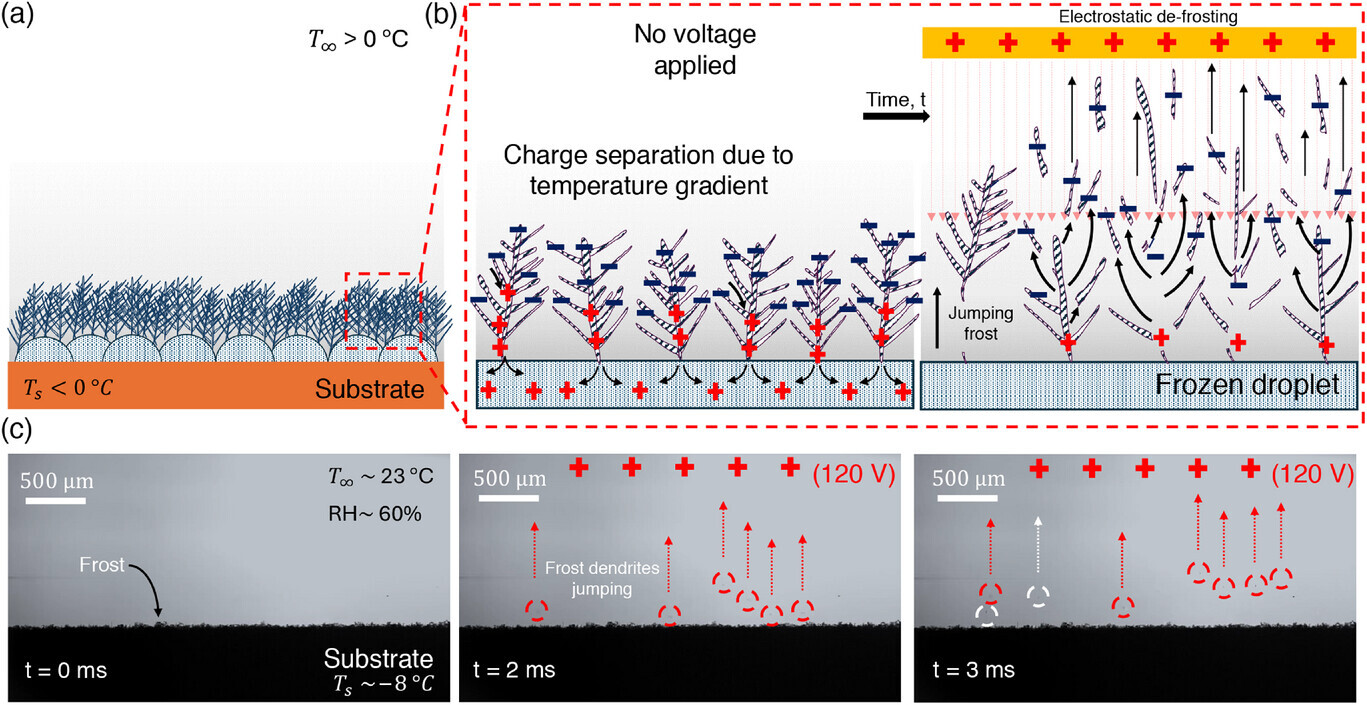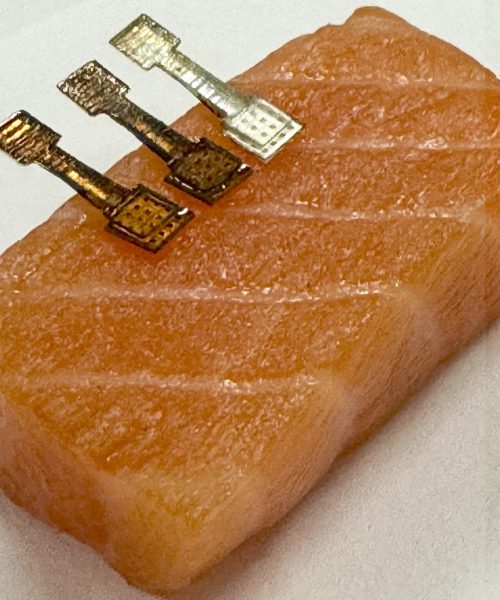As winter approaches, large swaths of the United States are eagerly awaiting their first big snowfalls of the season. As the snowflakes fall, many will dig out old, rusted sleds, toil over shaping the perfect snowball, and relish an evening brought back to life by a warm cup of hot cocoa. But then comes the ice.
Picturesque snow days are often replaced by long hours spent hand-scraping frosted ice off car windshields, heat pumps, and other areas around the house. On an industrial level, businesses wheel out giant heaters and use chemicals to expedite the melting process, which can be both costly and energy-intensive. But researchers at Virginia Tech think they may have discovered a fundamentally different deicing method, one made possible by essentially tricking ice at its molecular level.
The team calls their new melting technique electrostatic defrosting (EDF). It involves hovering an electrically charged copper plate over frost-covered surfaces. The negatively charged ions in the frost are attracted to the positively charged plate overhead, while the frost’s positive charges are repelled downward. This attraction is strong enough to cause frost particles to “jump” toward the plate. By gradually increasing the voltage, the researchers were eventually able to remove up to 75 percent of the frost’s mass. The team detailed their findings in a study recently published in Small Methods.
Fighting frost with water molecules
This new copper plate research builds on earlier work conducted by the same team, involving a suspended water film. In that experiment, the engineers artificially grew frost on several surfaces and used filter paper to hold a thin layer of water just above it. The negative charges at the top of the frost layer were attracted to the positive ions in the water film. Together, they formed a small electromagnetic field. The force exerted on the frost was strong enough to “detach” small frost bits, causing them to move towards the water. Researchers were actually able to capture the exact moment the frost particles jumped off using a high-speed camera.

This whole chemical process is a byproduct of the way that frost naturally forms at the molecular level. As ice grows, the molecules arrange themselves like pieces of a puzzle. But it isn’t always perfect. Sometimes certain pieces, in this case positively and negatively charged hydrogen ions, are missing. That misalignment in charges results in what scientists call ionic defects. In the water-film experiment, negative ionic defects in the ice migrated toward the top of the frost layer, while positive ionic defects moved toward the bottom.
Ice is no match for high voltage
Understanding that basic scientific concept of frost’s misaligned molecules, the Virginia Tech team believed an externally charged copper plate should be able to essentially replicate the effect of the water film but even more powerfully. It turns out, they were right.
They started their first test by hovering the copper plate above frost without any applied voltage. This setup removed 15 percent of the frost after just a few minutes. When they added 120 volts to the plate, it removed 40 percent of the frost. At 550 volts, it removed 50 percent. During testing, the charges were strong enough to gradually reveal a hidden Virginia Tech logo that had previously been buried beneath the frosty surface.

One might assume that adding even more voltage would lead to continued increases in frost removal—but that didn’t happen. When the researchers ticked the power to 1,100 volts, the frost mass was reduced by only 30 percent. At an even higher 5,500 volts, just 20 percent was removed. Somehow, the charge was “leaking.”
“We really thought we were onto something here,” study co-author and Virginia Tech mechanical engineer Jonathan Boreyko said in a statement. “Keep turning up the voltage and more frost will jump away, right? What was unexpected was when the opposite happened.”
The team eventually resolved the charge leakage issue by growing the artificial frost on a highly insulated, air-trapping superhydrophobic surface. With the leakage eliminated, they were able to remove 75 percent of the frost.

However, the engineers caution that the findings are still early and limited, they were never able to remove 100 percent of the frost in their experiments. And as newbies to icy sidewalks know, even a thin layer of leftover ice is enough to send legs flailing.
Still they remain hopeful. With more research, this electrostatic defrosting technique could lead to an affordable and energy-efficient method of deicing everything from cars and airplane wings to residential heat pumps.






